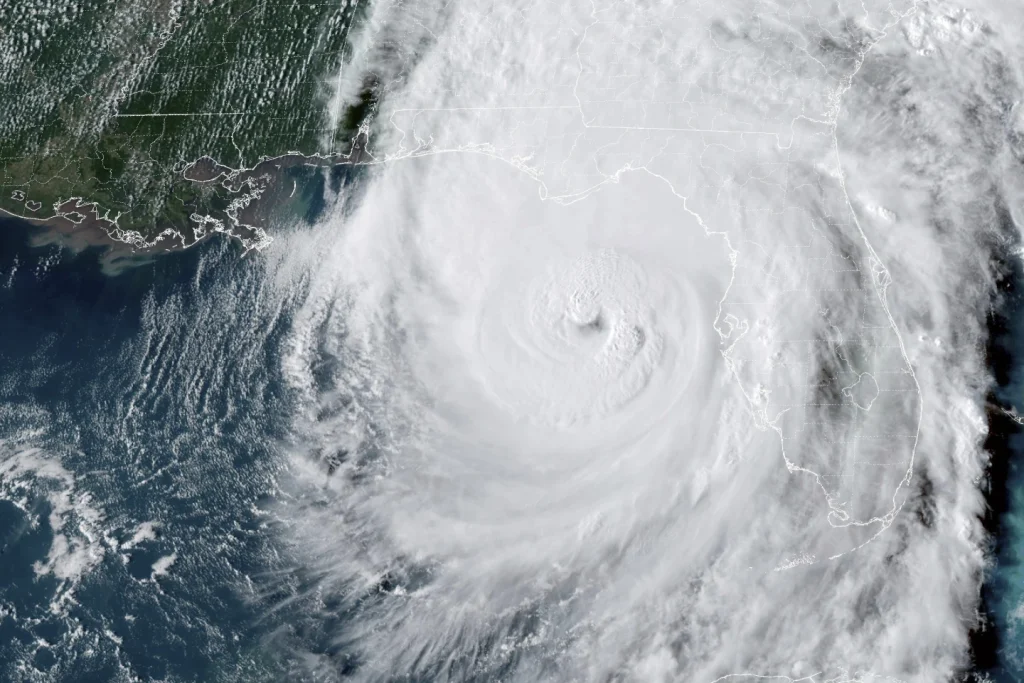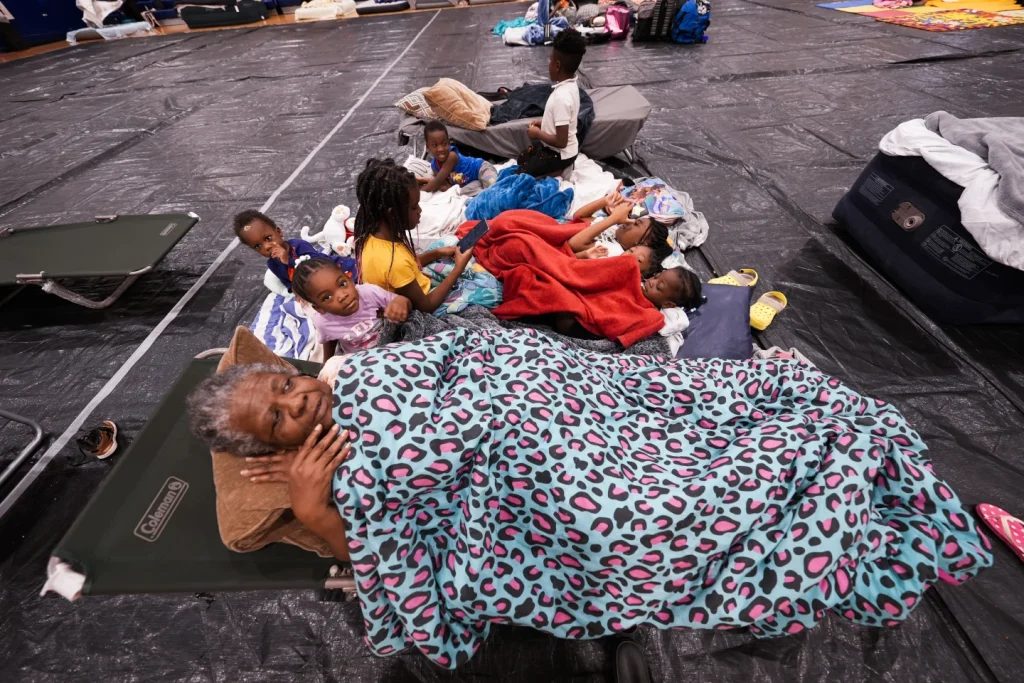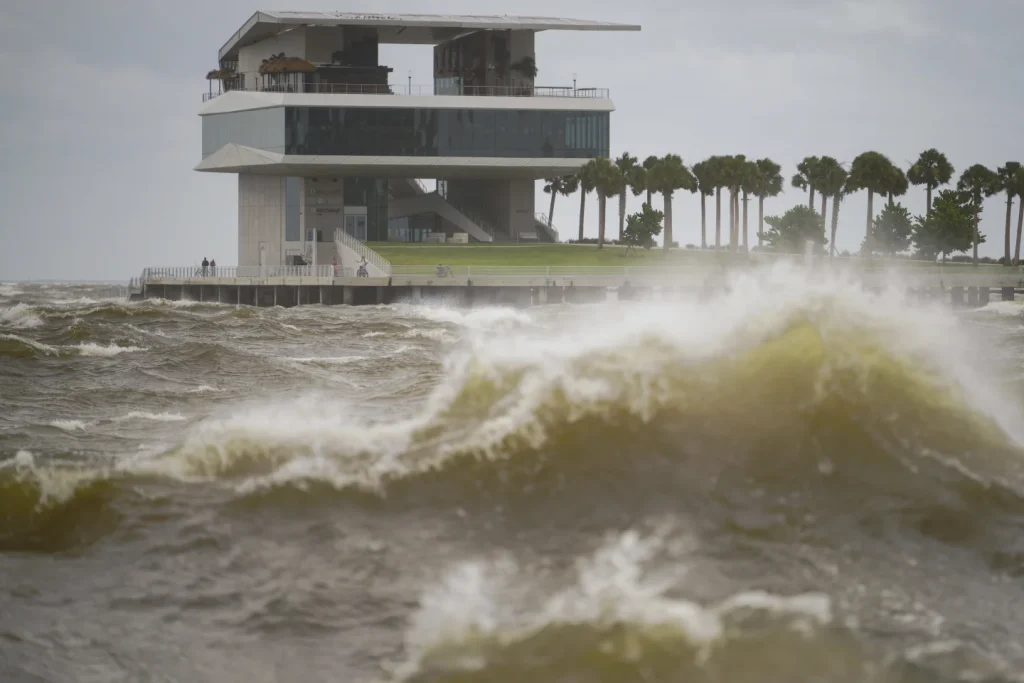The destructive potential of hurricanes poses an imminent threat to coastal communities, as evidenced by the recent landfall of Hurricane Helene in northwestern Florida.
Striking as a formidable Category 4 storm with sustained winds of 140 mph, Helene has not only wreaked havoc on the regions it touched but has also highlighted the persistent vulnerability of various southeastern states to such natural disasters.
This essay endeavors to dissect the implications of Hurricane Helene, focusing on its immediate effects on communities, the resultant emergency responses, and the broader lessons learned regarding disaster preparedness and climatic events.
Helene’s trajectory has been marked by rapid intensification, transitioning from a powerful tropical storm to a full-blown hurricane in a short timeframe.
The National Hurricane Center in Miami reported that Helene made landfall on Thursday evening at 11:10 p.m. near the mouth of the Aucilla River, situated in the Big Bend area of Florida’s Gulf Coast.
This particular region, characterized by its fishing villages and vacation spots, experienced unprecedented wind speeds and a storm surge that forecasters warned could lead to catastrophic scenarios.
The storm’s impact extended far beyond the coastline. Warnings for hurricane conditions and flash floods were issued across a broad area, encompassing northern Georgia and western North Carolina.
Such advisories underscore the storm’s extensive reach, with potential dangers looming for millions of residents.
The catastrophic winds and torrential rains that accompanied Helene’s rapid movement inland toward Georgia not only displaced thousands but also magnified the risk of tornadoes across multiple states.
Tragically, the aftermath of Hurricane Helene has already seen the loss of life, with reports confirming at least three storm-related fatalities.
These incidents — one in Florida involving a fatality resulting from a fallen sign, and two in Georgia due to a possible tornado — illuminate the real dangers posed by such intense weather phenomena.
Florida Governor Ron DeSantis poignantly remarked on the inevitable loss of life and property that the residents would face upon awakening to the storm’s aftermath.
In response to the unfolding crisis, emergency declarations were issued by governors in Florida, Georgia, Alabama, and Virginia, facilitating the mobilization of resources needed for rescue and recovery operations.
As over 1.2 million homes and businesses in Florida alone lost power, the urgency for coordinated disaster response became evident.
Local authorities implemented emergency protocols, encouraging residents, particularly in areas at high risk, to either evacuate or take shelter as Helene approached.
Emergency management agencies, in tandem with local sheriff’s offices, disseminated dire warnings akin to those issued in prior hurricanes, advising residents to identify themselves in case of unfortunate circumstances where rescue would be necessary.
This approach reflects a grim but crucial preparedness strategy that acknowledges the stark realities of storm impacts — a strategy that, unfortunately, continues to be relevant.
Beyond the immediate human toll, the environmental ramifications of Hurricane Helene are significant and warrant a broader discussion.
The storm’s heavy precipitation, with upward of 10 inches recorded in certain areas of North Carolina, raises concerns regarding flooding and soil erosion.
Such events foster conditions that not only impose immediate danger to infrastructure but also set the stage for longer-term ecological repercussions, including damage to natural habitats and increased vulnerability to future storms.
Moreover, the realities of climate change cannot be overlooked in the wake of such severe weather events. As ocean temperatures rise, the frequency and intensity of hurricanes are expected to increase, suggesting a paradigm shift in storm behavior.
The devastating effects of Helene serve as a case study for understanding how climate change interlinks with extreme weather patterns, necessitating urgent discourse around climate resilience and adaptation strategies.
Research and adaptation must focus not only on infrastructure and building codes but also on community awareness and preparedness.
As residents of Florida’s Gulf Coast respond to the escalating threats posed by Hurricane Helene, the perilous circumstances have necessitated mandatory evacuation orders spanning from the Panhandle southward to numerous low-lying areas, including Tallahassee, Gainesville, Cedar Key, Lake City, Tampa, and Sarasota.
Among those complying with these directives are Cindy Waymon and her husband, who have taken the precautionary measure of relocating to a shelter in Tallahassee following the fortification of their home and the diligent packing of essential medications, snacks, and beverages needed for their safety during the storm.

Waymon articulated the gravity of their decision by stating, “This is the first time we’ve actually come to a shelter, because of the complexities of the storm and the uncertainties.”
Federal agencies have mobilized search-and-rescue teams in anticipation of the storm’s devastating impact, with meteorological predictions indicating storm surges could reach an alarming 20 feet and carry particularly disastrous implications for regions such as Apalachee Bay, where officials describe the potential surge scenario as “a nightmare.”
The significance of heeding evacuation orders is underscored by local authorities urging residents to take these warnings with utmost seriousness.
The coastal region, often referred to as the Forgotten Coast due to its relative immunity from extensive condo developments and commercialization, remains cherished for its natural beauty, characterized by expansive salt marshes, tidal pools, and barrier islands.
Residents like Anthony Godwin, who lives perilously close to the shoreline, face the sobering reality that residing in this scenic locale comes with the constant risk of catastrophic loss.
In light of the impending storm, educational institutions and universities have canceled classes, while airports in Tampa, Tallahassee, and Clearwater have ceased operations, triggering widespread cancellations even beyond Florida’s borders.
Despite expectations of the hurricane weakening as it travels inland, the trajectory suggests that adverse weather conditions, including damaging winds and torrential rainfall, will extend as far as the southern Appalachian Mountains, raising concerns about potential landslides in regions such as Tennessee.
Helene’s destructive path has already wreaked havoc in Mexico’s Yucatan Peninsula, leading to severe flooding and infrastructural damage, including significant power outages in western Cuba.

Furthermore, anticipations of hurricane conditions stretch as far as 100 miles north of the Georgia-Florida line, prompting the state to open parks to accommodate evacuees and their pets, concomitantly enforcing overnight curfews across numerous cities and counties in southern Georgia.
Georgia Governor Brian Kemp has acknowledged the unprecedented nature of the storm, asserting that this could rank among the most formidable storms to affect the region.
With Atlanta bracing for potential impacts that could be historic for a major Southern inland city, the implications of Hurricane Helene are magnified by the broader context of an Atlantic hurricane season projected to be above average, propelled by alarmingly high ocean temperatures, as indicated by the National Oceanic and Atmospheric Administration.
In conclusion, Hurricane Helene has delivered a sobering reminder of nature’s power and unpredictability. The immediate consequences of this disaster extend beyond the loss of life and property, prompting reflection on emergency management practices, community readiness, and climate resilience.
As the affected regions begin the arduous journey of recovery and assessment, it is imperative that communities, policymakers, and scientific organizations collaborate to forge robust strategies that mitigate the impacts of future hurricanes.
Through learned experiences and enhanced readiness measures, society can strive towards resilience in the face of increasingly turbulent climatic challenges.
The heartbreaking events surrounding Hurricane Helene cannot be merely viewed as a narrative of devastation but should inspire a collective commitment to safeguard lives and preserve the integrity of vulnerable communities in the years to come.
